Mudras in Mohiniattam – Part 2
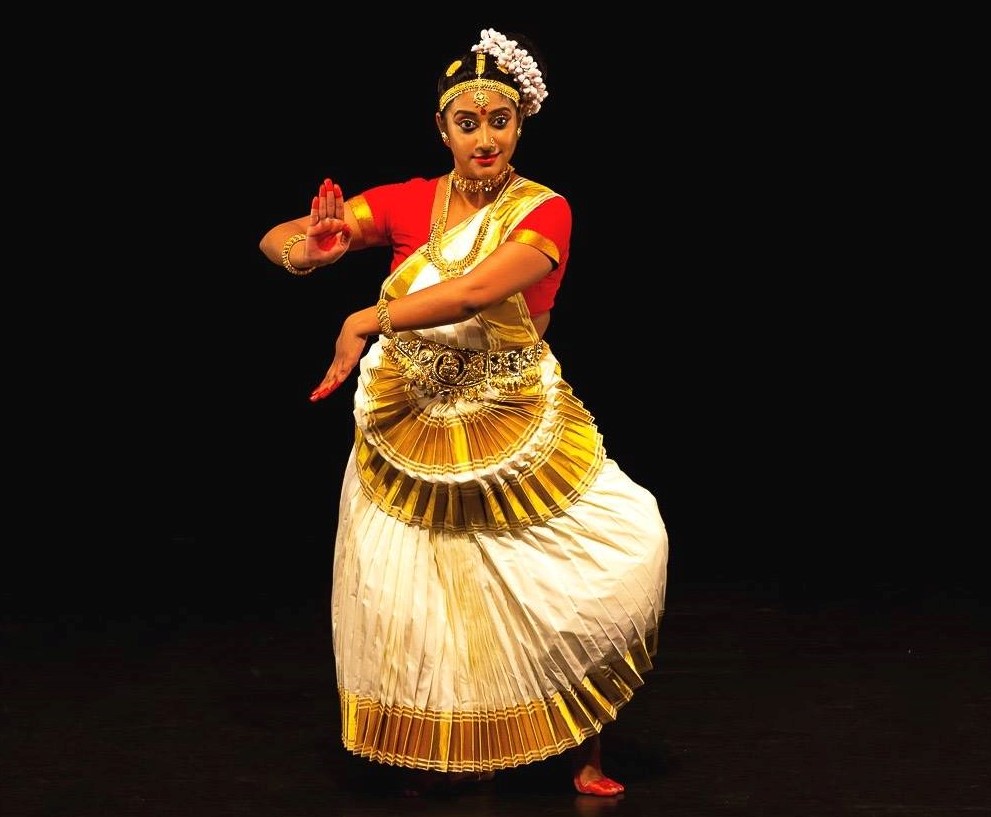
#WednesdayWisdom is a series that began during the 40th anniversary celebration of Akademi to revisit Indian classical dance roots by sharing gems of knowledge from ancient Shastras (dance texts) that hold relevance even today. The blog is curated by Bharatanatyam artist, Suhani Dhanki, along with with our Head of Marketing, Antareepa Thakur.
In this blog series, we are inviting artists practicing different South Asian dance styles to contribute some interesting facts about their art forms, some of them rarely seen in the UK. Read our previous blogs in this series here.
This blogpost on Mudras in Mohiniattam is researched and written by Ranjitha Chowalloor, Mohiniattam artist. This is part 2 of a two part series. You can read part 1 here.
In response to last week’s blog post I received some interesting questions from readers on the topic of Mohiniattam Mudras, so I wanted to elaborate a bit on the history. Back in the day, there were only few gramyamudras and tantrikmudras that were being used in Mohiniattam. With time, some of these gramyamudras or tantrikmudras became less prevalent and were not used thereafter.
As mentioned last week, art forms in Kerala began following and adapting information on mudras and hand gestures from Hastalakshanadeepika and this became the sole reference guide for Mohiniattam as well. An interesting fact about this ancient text is that the author remains unknown to this day and only a part of the text has since been discovered thus far. Art forms from Kerala like Kudiyattam, Nangjar kuthu, Krsnattam, Kathakali and Mohiniattam along with other traditional art forms have adopted the mudras laid down by the text. While Mohiniattam as an art form uses the simple mudras coupled with abhinaya to depict or express an emotion or a feeling. It is not as elaborate with mudras as one may see in the other art forms.
The ancient text articulates 24 mudras in a particular order and this is strongly followed by Mohiniattam artists. The text provides guidelines with regard to usage of various mudras and it is interesting to see the difference in the names and usage when compared to other art forms like Bharatanatyam, Odissi etc.
Another interesting aspect about Mohiniattam is; it being a feminine and graceful dance form, abhinaya is the key element for the dancer, with mudras adding the necessary enhancement to the depiction or simply adding ornamental value in a pure dance motif. However, it is noteworthy to mention that Mohiniattam is evolving tremendously and there is much importance given to using mudras to make it a more effective dance performance.
The mudras can be held in four different ways:
1) Asamyukta Mudra – holding the mudra in one hand
2) Samyukta Mudra – holding the mudra in both hands
3) Samana Mudra – holding the same mudra on both hands
4) Misra Mudra – holding different mudras on each hand
Below we explore the next 12 mudras visually and learn what meanings they convey. If you have only joined now, you can read part 1 showing the first 12 mudras here.
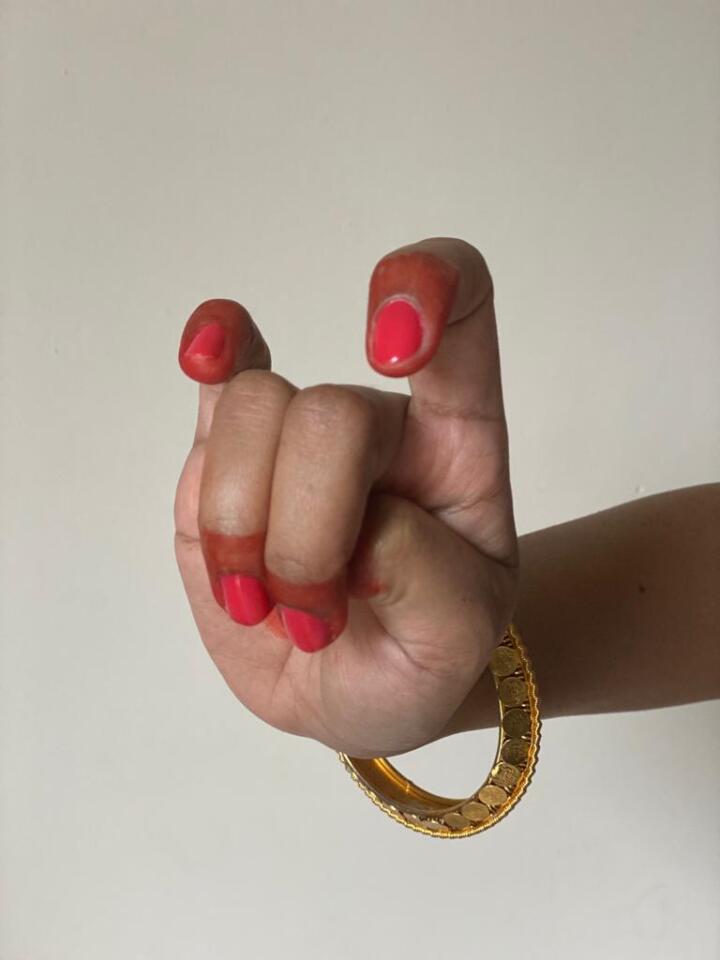
13) Mukuram
Samyukta – separation (viraha), veda, growth, waist belt
Asamyukta – bangles, neck, rays
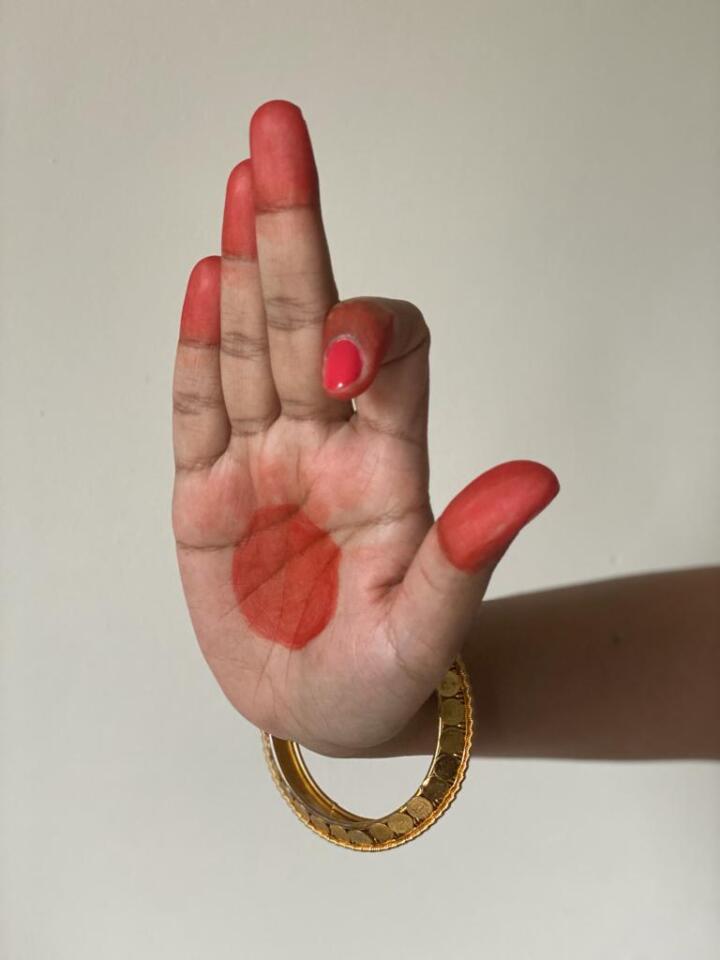
14) Bharamaram
Samyukta – feathers of a peacock, darkness (night), fear (both hands), birth
Asamyukta – to sing, to cry, fear
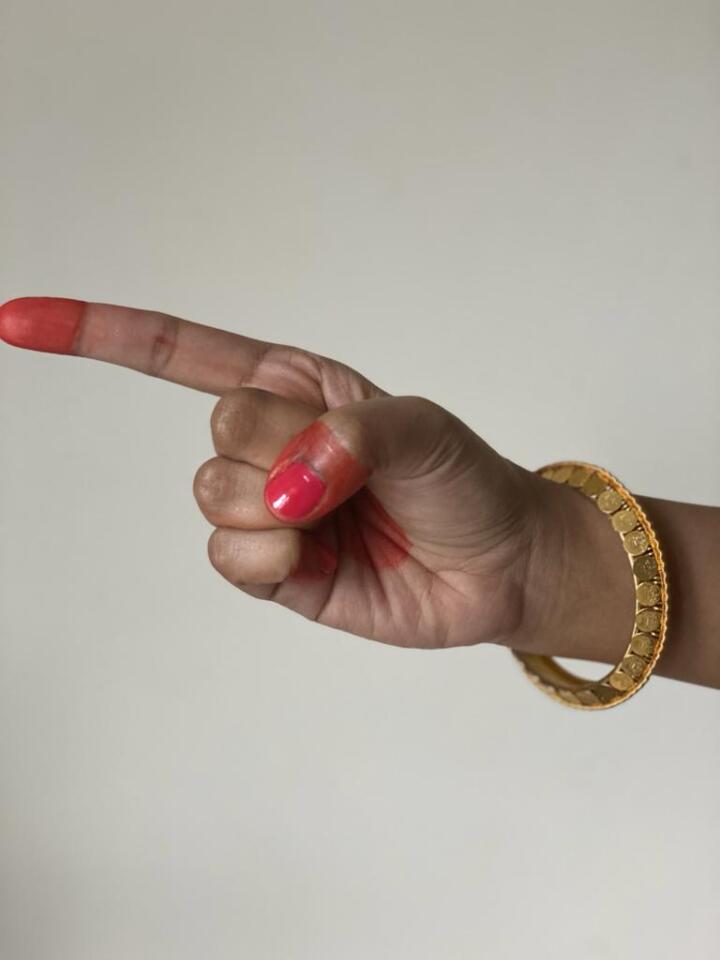
15) Suchikamukham
Samyukta – intoxication, the world, surrounding, separating
Asamyukta – quiet/silence, listening attentively, pronouns (you, me, he, she, they, them), time frame of an event (e.g. long ago, then, now)
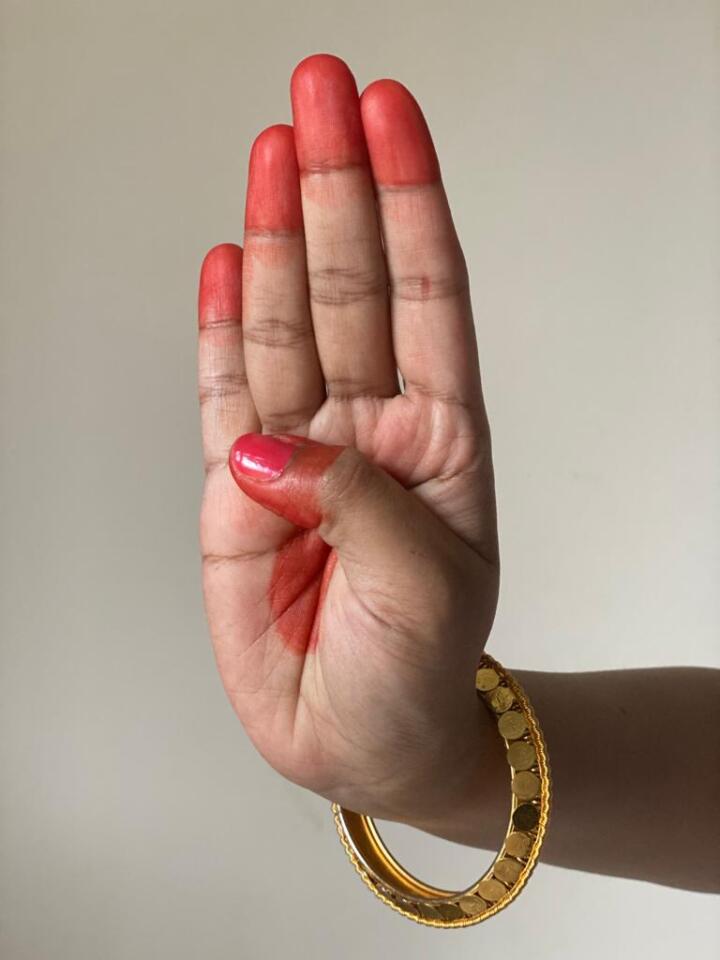
16) Pallava
Samyukta – peak of a mountain, spear, horns
Asamyukta – far away or distant, corners, smoke
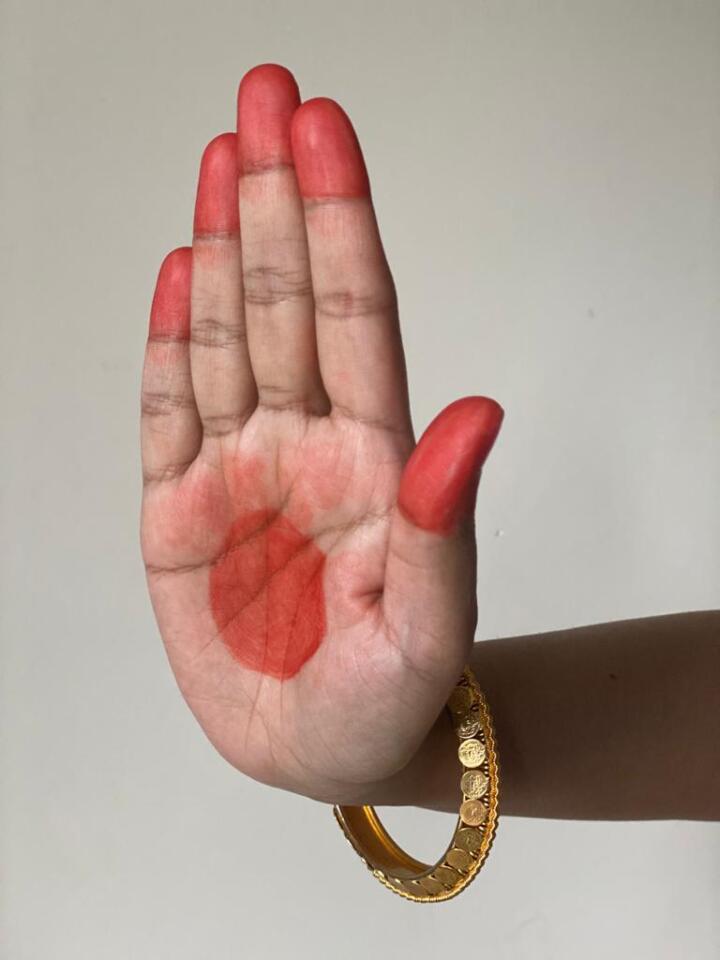
17) Tripathakam
Samyukta – to deny strongly, to hide, to drink, to plead
Asamyukta – to call out to someone (sakhi), to say no, depict “me”, to obstruct
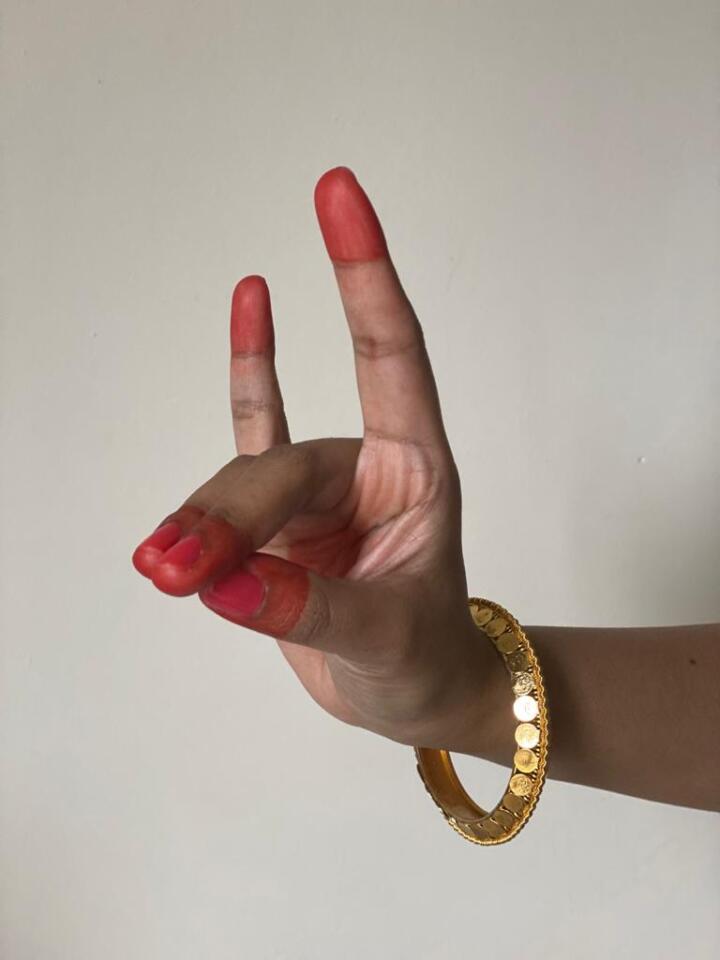
18) Mrigashirsham
Samyukta – lotus petal
Asamyukta – deer
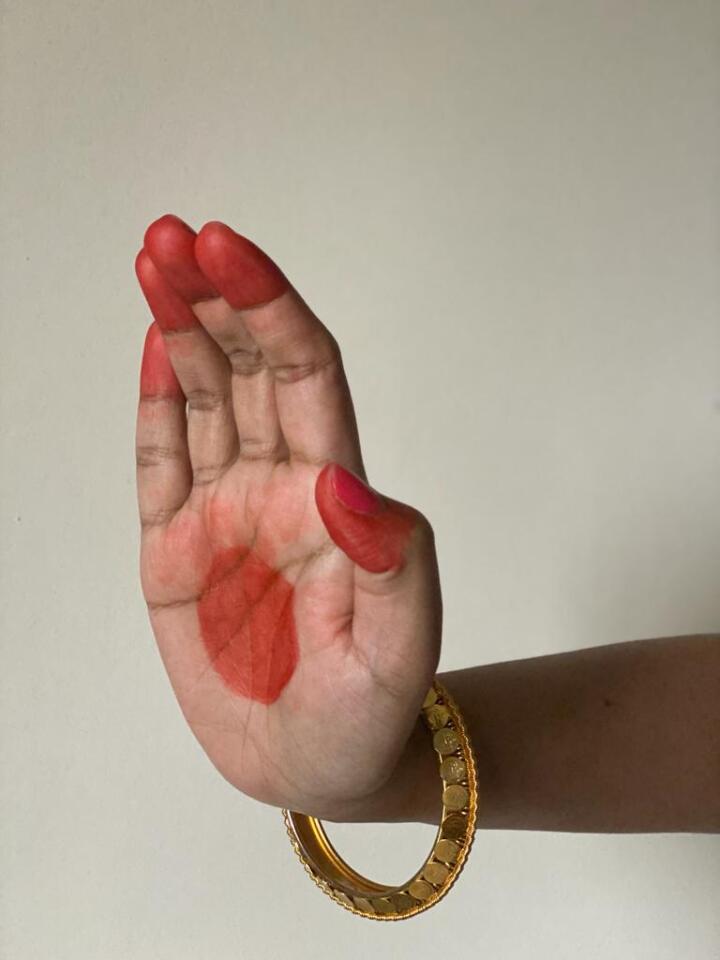
19) Sarpashiras
Samyukta – to hold something fluid, to make sandalwood paste
Asamyukta – snake, to give a small quantity of something
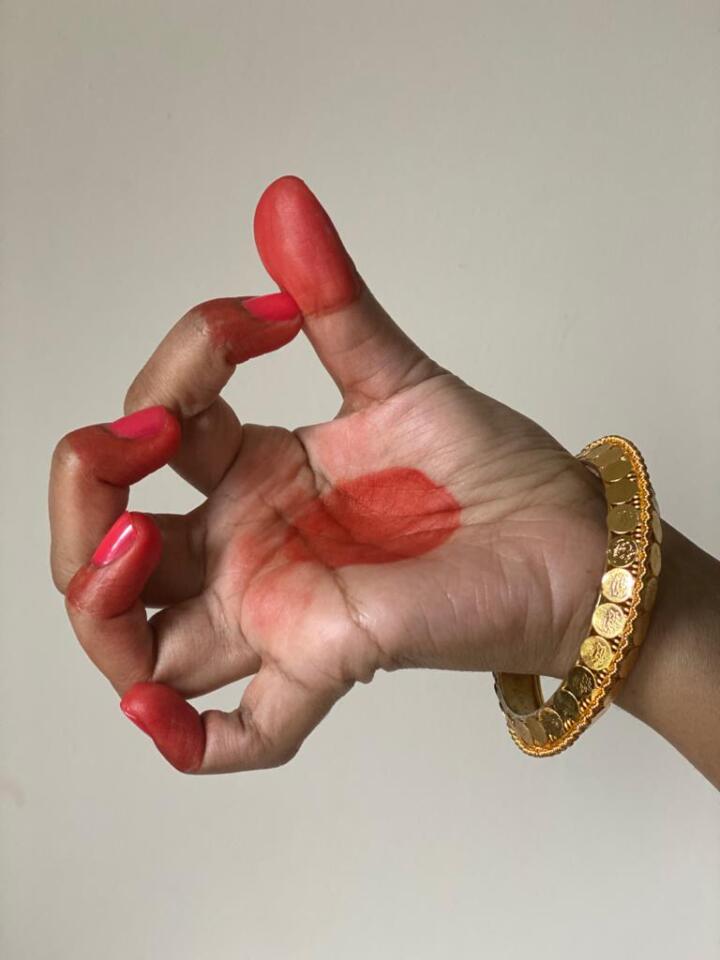
20) Vardhamankam
Samyukta – yogi, navel
Asamyukta – to drink, nose, mark on forehead
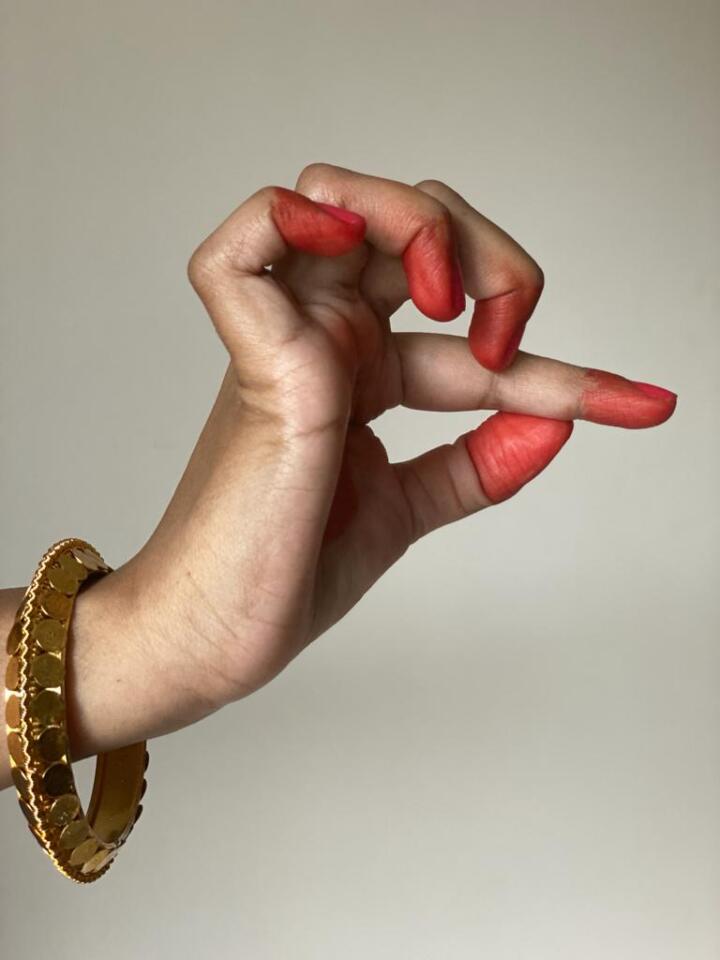
21) Aralam
Samyukta – noise, cruelty,
Asamyukta – full moon, crescent moon, showing little, flower bud, needle
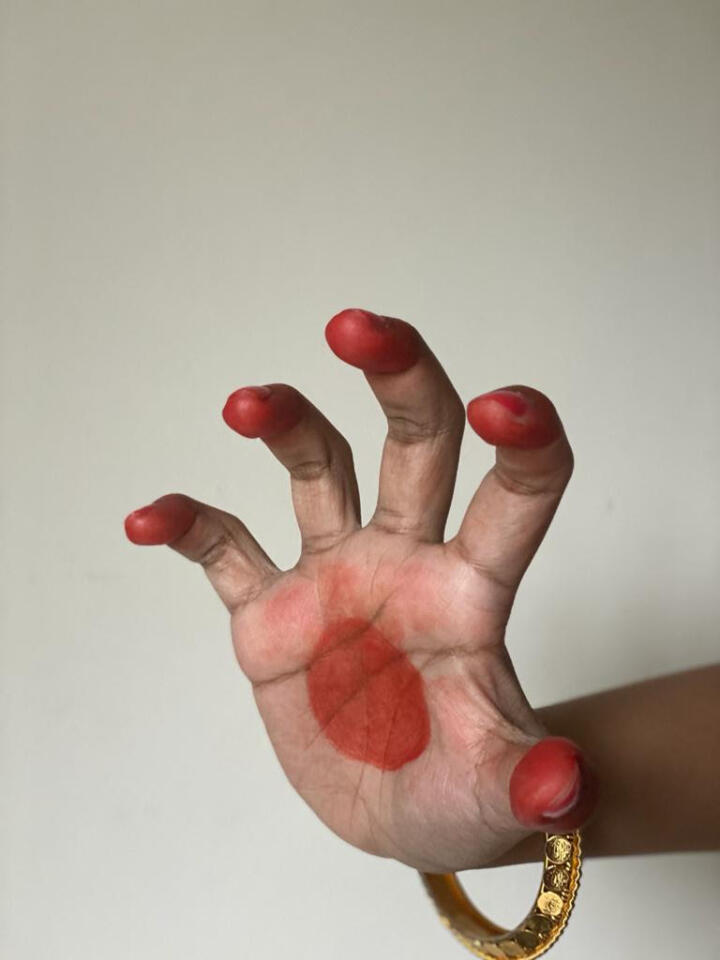
22) Urnanabham
Samyukta – lion, to tear, tiger
Asamyukta – vessel or container, horse
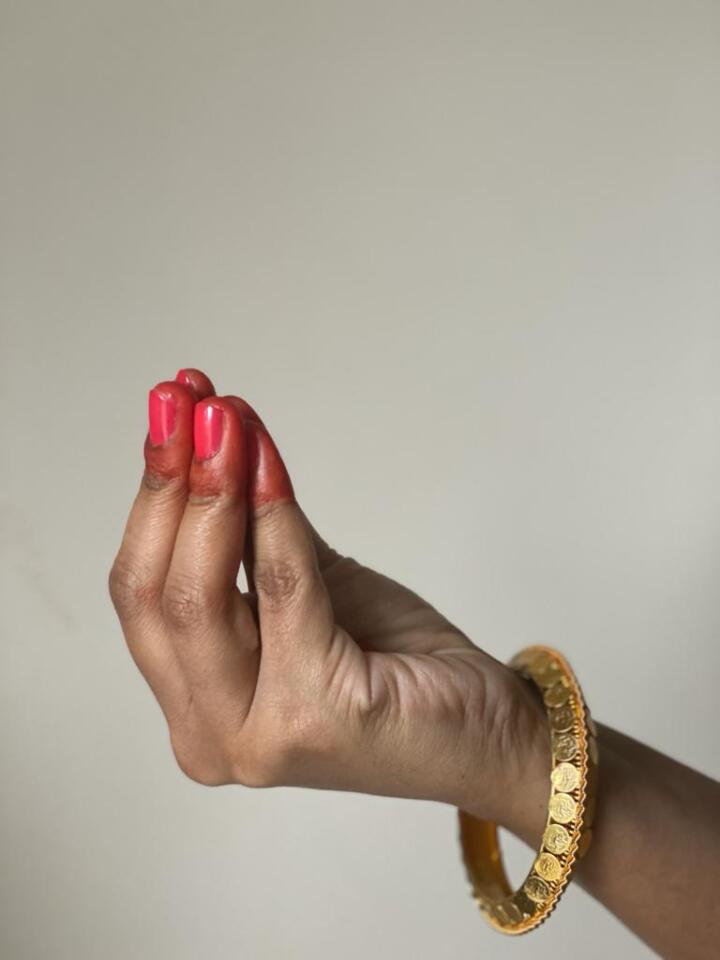
23) Mukulam
Samyukta – monkey, number 10, dejected
Asamyukta – number 5, diamond, mind
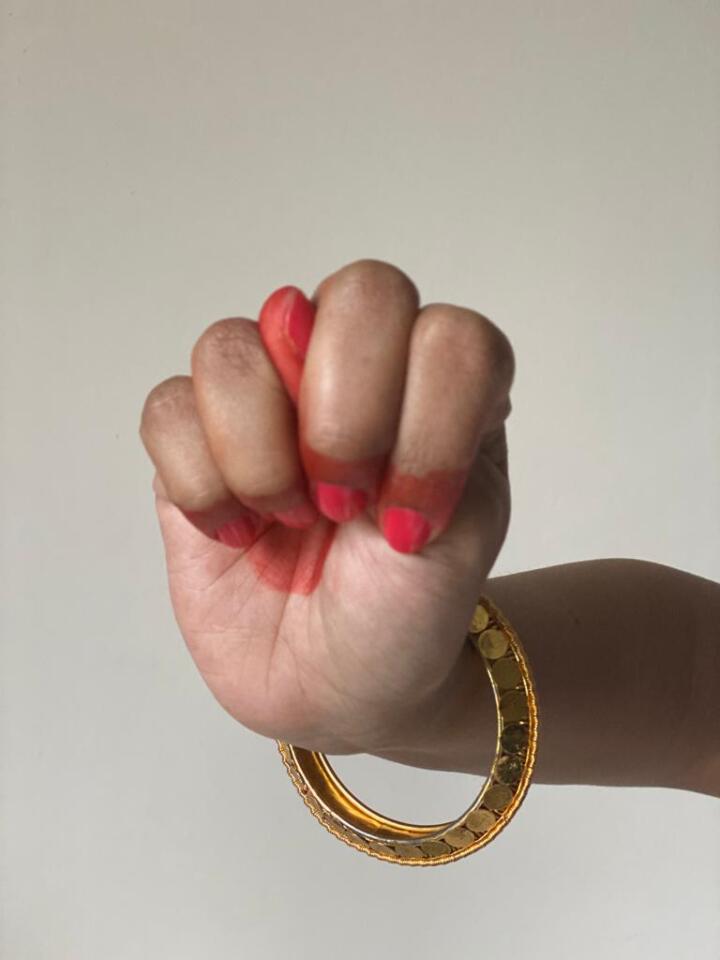
24) Katakamukham
Samyukta – to destroy, old age (weakness), bondage
Asamyukta – victory, heart
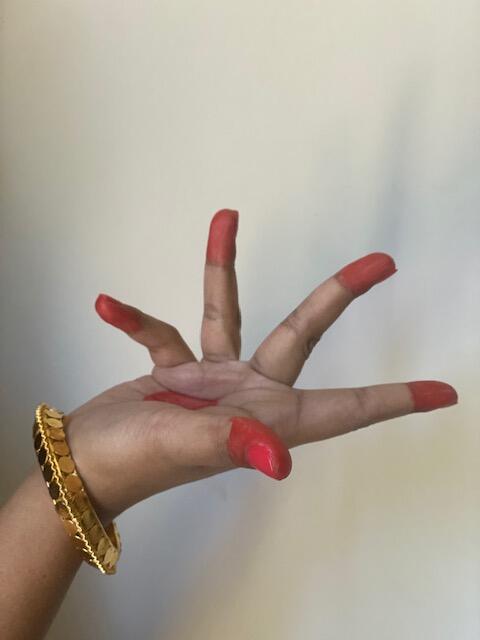
There are also other mudras used in Mohiniattam which are borrowed from other texts like Natyashastra and/or Abhinayadarpanam.
Alapadmam
The beautiful Alapadma is just one such mudra and is widely used.
Watch this space for a blog on hasta in Kathak for next week’s continuation of #WednesdayWisdom.